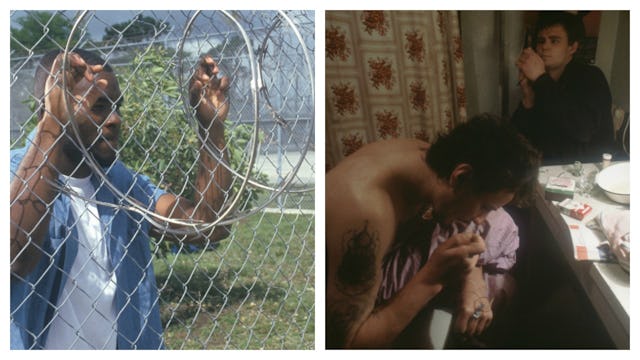Our Nation's Drug Crisis Is An Example Of Systemic Racism, And This Is Why

There’s no doubt that the use and abuse of opioid drugs has been on the rise in the last few years. It has begun to seep into every crevice of the United States, and seemingly no one is safe. But here’s the thing we’re overlooking: Drug crises aren’t a new concept. It’s only that now they’re getting attention because they’re starting to heavily affect white men and women.
When there was a drug crisis in the black community, back in the 1980s, there was no sympathy for those with substance use disorders. It was simply a “war on drugs” to keep them from infiltrating the white community. Black people grappling with addiction weren’t sent to rehab; they were sent to prison. There was no public outcry to save black people in poor neighborhoods who were robbing their families and abandoning their children to feed their addictions. But as soon as Chad and Becky started becoming addicted to drugs, instead of Shaniqua and Dayvon, it became an “epidemic” that needed to be fixed.
The phrase “War on Drugs” was first used by President Richard Nixon in 1971. But the phrase is probably most closely tied to President Ronald Reagan, who not only declared a stronger war on drugs in 1982, but created a national movement to protect children from the horrors that a life of drug addiction could create.
If you grew up in the ’80s or ’90s, you probably remember things like “Just Say No” and D.A.R.E. programs, used to discourage illicit and illegal drug use and typically lead by a local law enforcement officer. While drugs had long been an issue, in the 1980s, the crack-cocaine epidemic began to ravage the country, particularly in many black areas of the country.
With the image of a “welfare queen” embedded in the American consciousness, it was easy to push imagery of the black community addicted to crack as a scourge that needed to be resolved. “These people” weren’t worth saving, so they were swept under the rug to kill themselves via overdose or put into prison to rot away, so they couldn’t come into white neighborhoods to wreak havoc. Or so the line of thinking went.
But once the drug changed from crack-cocaine to heroin and other opioids like prescription pills, and moved from the inner-city crack dens to the suburbs of states like Vermont, it was suddenly an epidemic that needed a cure. That cure didn’t mean throwing addicts in jail or letting them die, like the previous “war on drugs.” It meant saving them with things like medication and rehab.
And while these addicts deserve humanity, empathy, and treatment options, the difference in response is alarming. And racist.
White opioid users have been painted with a brushstroke of humanity and empathy that’s not often afforded to black drug users. Chad the lacrosse player overdoses at a party, and the cops who show up, give him a shot of naloxone and cart him off to the hospital. Antoine does the same thing in the hood, and the cops cuff him and book him before carting him off to the hospital.
When white people became the face of drug addiction, drug addiction became something that’s fixable. But as Cardozo Law School Professor Ekow Yankah points out in an essay for PBS NewsHour, “Blacks would just have to pull themselves out of the crack epidemic. Until then, the only answer lay in cordoning off the wreckage with militarized policing.”
In 2016, President Obama started to advocate for the recognition of drug addiction as a disease to be treated, thereby expanding treatment facilities and access to lifesaving drugs in the event of an overdose. That’s a stark contrast to the 1990s when President Clinton ramped up tough drug legislation and Hillary Clinton famously proclaimed that black men were “super predators” and more black men found themselves incarcerated.
Despite the tough stance, by 2011, the alleged war on drugs was seen as a failure, especially as the amount of white people facing addiction began to grow.
Coincidence? Hard to tell.
“When addiction was a black problem, there was no wave of national compassion. Instead, we were warned of super predators, young, faceless black men wearing bandannas and sagging jeans,” Yankah said.
Look, the numbers don’t lie. In fact, they support what many black people have known to be true about the criminalization of drug addiction for decades.
According to the NAACP, as of 2015, though black people account for 12% of monthly drug users, they are 32% of the people arrested for drug possession.
According to a study conducted by the U.S. Department of Justice’s Bureau of Justice Statistics, in 2012, 88% of crack cocaine offenders were black, which was more than half (54%) of drug offenders in the federal prison system. Heroin offenders only make up 6% of the federal prison system, and that’s the opioid that most of these “save the addict” campaigns focus on.
This is not a coincidence.
Pretending this sudden interest in rehabilitating those facing drug addiction isn’t a race thing is just sticking your head in the sand to avoid the reality. Mass incarceration of black people is so tightly wound up in the “war on drugs” that it’s impossible to see the two as separate occurrences. Because of systemic racism, it’s just easier for most folks to accept the rhetoric that a black person with substance use disorder can’t be helped and is better off rotting away in jail than receiving treatment and medical care, you know where they can’t hurt anyone.
But is this same belief held about that white suburban soccer mom with an opioid addiction? I think we both know the answer to that.
The war on drugs has allegedly ended, but the war on racial disparity when it comes to drug addictions and convictions is just beginning.